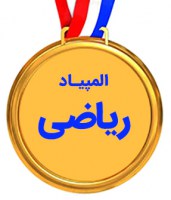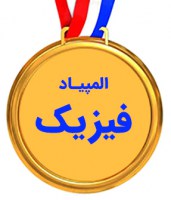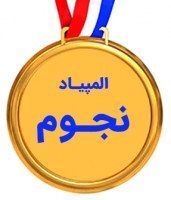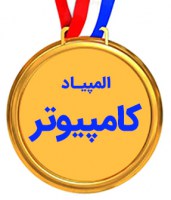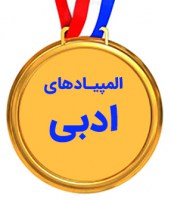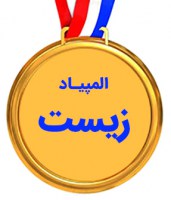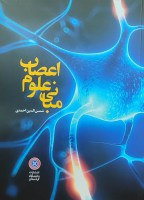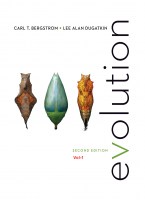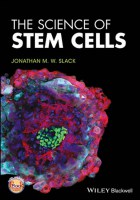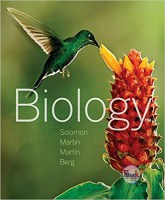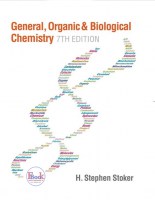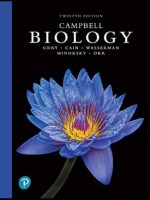دسته بندی
مبانی علوم اعصاب
کتاب”مبانی علوم اعصاب” با هدف تقویت دانش آناتومی دانشجویان همراه با آموزش مبانی فیزیولوژی اعصاب و شناساندن بهترساختاروعملکرد آن و بیان عوارض ناشی از بیماری های مرتبط با آسیب به نواحی مختلف دستگاه عصبی با حمایت ستاد توسعه علوم و فن آوری های شناختی چاپ و اتشار یافت.
دراین کتاب علوم اعصاب امروزه به عنوان علمی میان رشته ای تعیین و تسلط برآن نیازمند آشنایی با علوم مختلفی همچون آناتومی فیزیولوژی ، زیست شناسی سلولی و مولکولی ، زیست شناسی تکوینی ، روان شناسی ، علوم شناختی ، فارماکولوژی و بیماری شناسی عصبی یا نورولوژی قلمداد شده است.
مولف در مقدمه کتاب می نویسد: مغز انسان پیچیده ترین ساختار زنده در جهان هستی است و ما را از محیط درون و بیرون آگاه می سازد ، اعمال حیاتی و پاسخ های ما را متناسب با محرک های مختلف کنترل و تنظیم می کند و احساسات ،عواطف و هیجانات ما را مدیریت می کند.
دربخشی دیگر ازاین نوشتار تاکید شده است که مغزبخشی از دستگاه عصبی است که به انسان اجازه می دهد تا تجربه و دانش کسب کرده و با تفکرواندیشه برنامه ریزی و سازماندهی انجام دهد تا به موفقیت های شگرفی دست یابد.
مولف می افزاید: مبانی علوم اعصاب بر اساس سرفصلهای متنوعی که دارد، نیاز طیف وسیعی از دانشجویان علوم شناختی، علوم زیستی، علوم پزشکی، روانشناسی، مشاوره، تربیتبدنی و دانشجویان رشتههای مهندسی مانند هوش مصنوعی و مهندسی پزشکی را برای یادگیری علوم اعصاب برآورد میسازد. وی در این کتاب با اشاره به برگزاری سالانه مسابقات دانش مغز (Brain Bee) کشوری توسط انجمن علوم اعصاب ایران و ستاد توسعهی علوم و فن آوریهای شناختی می نویسد: این مسابقات در میان دانشآموزان دبیرستان، علاقهمندان زیادی پیدا کرده است. با توجه به این که منابع این مسابقات بیشتر به زبان انگلیسی هستند، مطالعهی کتاب مبانی علوم اعصاب میتواند یادگیری پایهای علوم اعصاب را برای دانشآموزان علاقهمند به مسابقات دانش مغز تسهیل نموده و آنان را برای مرحلهی مقدماتی و کشوری این مسابقات آماده نماید.
این کتاب شامل ۴۶۴ صفحه و شامل ۲۲ فصل با حجمی مناسب از نظر محتوای مطالب ضروری برای یادگیری علوم اعصاب تالیف دکتر شمسالدین احمدی توسط انتشارات دانشگاه کردستان منتشر شده است.
بیولوژی سولومون ویرایش یازدهم (زبان اصلی)
Solomon, Martin, Martin and Berg's BIOLOGY--often described as the best majors' text for learning Biology--is also a complete teaching program. The integrated, inquiry-based learning system guides students through every chapter with key concepts at the beginning of each chapter and learning objectives for each section. End-of-section Checkpoint questions encourage students to review key points before moving on. A chapter summary further reinforces learning objectives, followed by an opportunity for students to test their understanding. The eleventh edition offers expanded integration of the text's five guiding themes of Biology--the evolution of life, the transmission of biological information, the flow of energy through living systems, interactions among biological systems and the inter-relationship of structure and function.
شیمی عمومی، آلی و زیستی استوکر (زبان اصلی)
از ویژگی های شاخص این کتاب، استفاده از اشکال ساختارهای شیمیایی ترکیبات مختلف جهت یادگیری بهتر است.
کتاب های یونی مد با استانداردهای آزمون ورودی دانشگاه های معتبر اروپا و کانادا و توسط اساتید بین المللی و با تجربه تالیف و گردآوری شده است و پاسخگوی بخش اعظم نیازهای مخاطبان ایرانی است.
بیولوژی کمپبل 2020 زبان اصلی
Campbell Biology 11th Edition
About the Author
Lisa A. Urry
Lisa Urry (Chapter 1 and Units 1, 2, and 3) is Professor of Biology and Chair of the Biology Department at Mills College in Oakland, California, and a Visiting Scholar at the University of California, Berkeley. After graduating from Tufts University with a double major in biology and French, Lisa completed her Ph.D. in molecular and developmental biology at Massachusetts Institute of Technology (MIT) in the MIT/Woods Hole Oceanographic Institution Joint Program. She has published a number of research papers, most of them focused on gene expression during embryonic and larval development in sea urchins. Lisa has taught a variety of courses, from introductory biology to developmental biology and senior seminar. As a part of her mission to increase understanding of evolution, Lisa also teaches a nonmajors course called Evolution for Future Presidents and is on the Teacher Advisory Board for the Understanding Evolution website developed by the University of California Museum of Paleontology. Lisa is also deeply committed to promoting opportunities for women and underrepresented minorities in science.
Michael L. Cain
Michael Cain (Units 4, 5, and 8) is an ecologist and evolutionary biologist who is now writing full-time. Michael earned a joint degree in biology and math at Bowdoin College, an M.Sc. from Brown University, and a Ph.D. in ecology and evolutionary biology from Cornell University. As a faculty member at NEW! Mexico State University and Rose-Hulman Institute of Technology, he taught a wide range of courses, including introductory biology, ecology, evolution, botany, and conservation biology. Michael is the author of dozens of scientific papers on topics that include foraging behavior in insects and plants, long-distance seed dispersal, and speciation in crickets. Michael is also the lead author of an ecology textbook.
Steven A. Wasserman
Steve Wasserman (Unit 7) is Professor of Biology at the University of California, San Diego (UCSD). He earned his A.B. in biology from Harvard University and his Ph.D. in biological sciences from MIT. Through his research on regulatory pathway mechanisms in the fruit fly Drosophila, Steve has contributed to the fields of developmental biology, reproduction, and immunity. As a faculty member at the University of Texas Southwestern Medical Center and UCSD, he has taught genetics, development, and physiology to undergraduate, graduate, and medical students. He currently focuses on teaching introductory biology. He has also served as the research mentor for more than a dozen doctoral students and more than 50 aspiring scientists at the undergraduate and high school levels. Steve has been the recipient of distinguished scholar awards from both the Markey Charitable Trust and the David and Lucille Packard Foundation. In 2007, he received UCSD’s Distinguished Teaching Award for undergraduate teaching.
Peter V. Minorsky
Peter Minorsky (Unit 6) is Professor of Biology at Mercy College in New York, where he teaches introductory biology, evolution, ecology, and botany. He received his A.B. in biology from Vassar College and his Ph.D. in plant physiology from Cornell University. He is also the science writer for the journal Plant Physiology. After a postdoctoral fellowship at the University of Wisconsin at Madison, Peter taught at Kenyon College, Union College, Western Connecticut State University, and Vassar College. His research interests concern how plants sense environmental change. Peter received the 2008 Award for Teaching Excellence at Mercy College.
Jane B. Reece
The head of the author team for recent editions of CAMPBELL BIOLOGY, Jane Reece was Neil Campbell’s longtime collaborator. Earlier, Jane taught biology at Middlesex County College and Queensborough Community College. She holds an A.B. in biology from Harvard University, an M.S. in microbiology from Rutgers University, and a Ph.D. in bacteriology from the University of California, Berkeley. Jane’s research as a doctoral student and postdoctoral fellow focused on genetic recombination in bacteria. Besides her work on the Campbell textbooks for biology majors, she has been an author of Campbell Biology: Concepts & Connections, Campbell Essential Biology, and The World of the Cell.
Neil A. Campbell
Neil Campbell (1946–2004) combined the investigative nature of a research scientist with the soul of an experienced and caring teacher. He earned his M.A. in zoology from the University of California, Los Angeles, and his Ph.D. in plant biology from the University of California, Riverside, where he received the Distinguished Alumnus Award in 2001. Neil published numerous research articles on desert and coastal plants and how the sensitive plant (Mimosa) and other legumes move their leaves. His 30 years of teaching in diverse environments included introductory biology courses at Cornell University, Pomona College, and San Bernardino Valley College, where he received the college’s first Outstanding Professor Award in 1986. He was a visiting scholar in the Department of Botany and Plant Sciences at the University of California, Riverside. Neil was the lead author of Campbell Biology: Concepts & Connections, Campbell Essential Biology, and CAMPBELL BIOLOGY.
منابع المپیاد
منابع آزمون های المپیادهای علمی کشور




